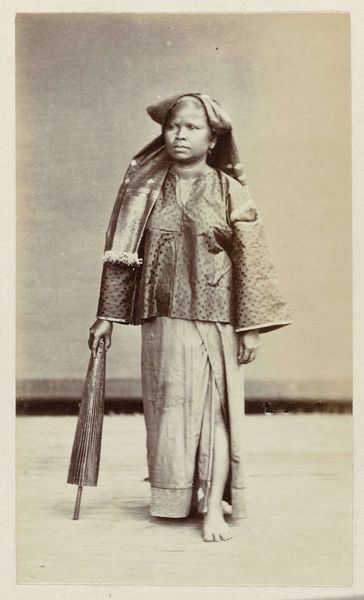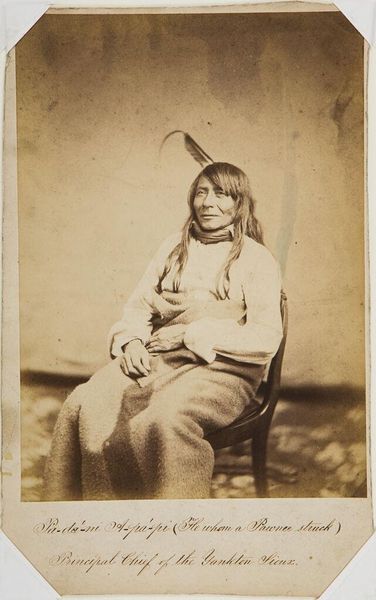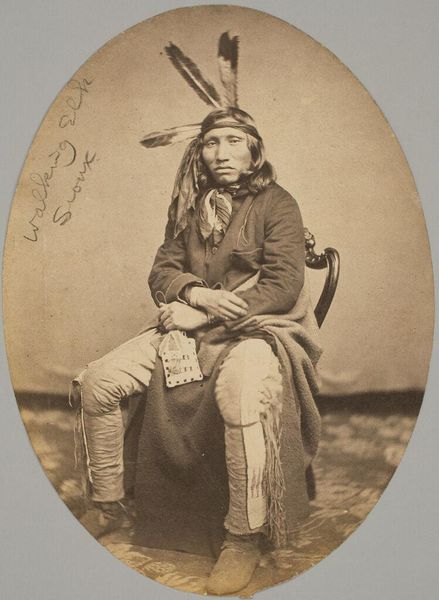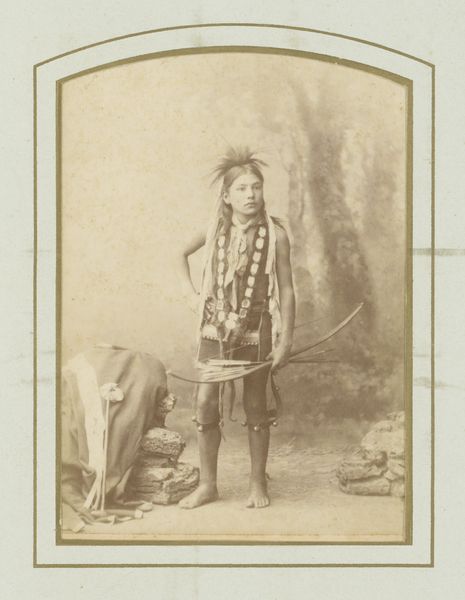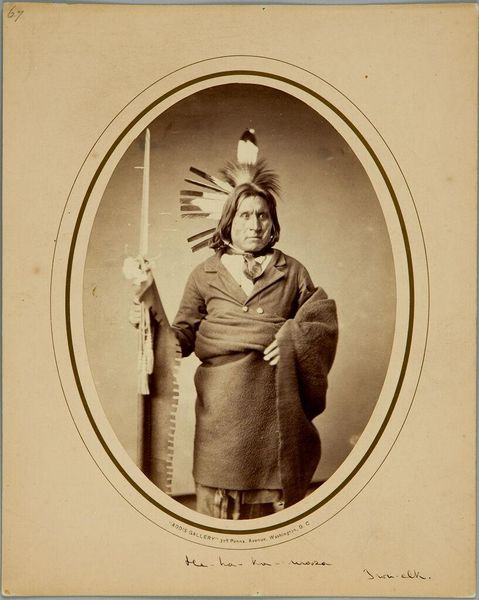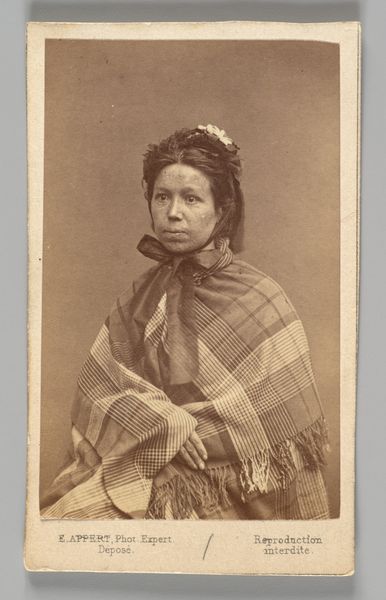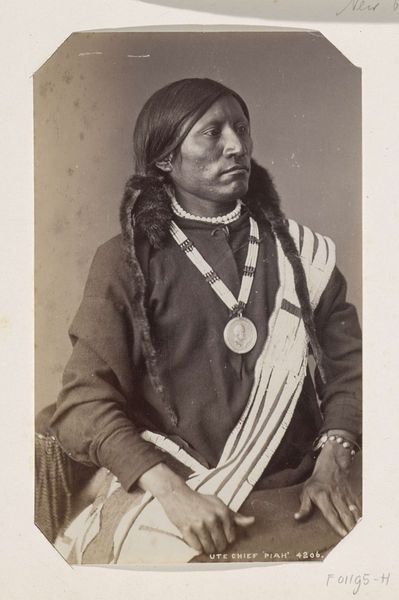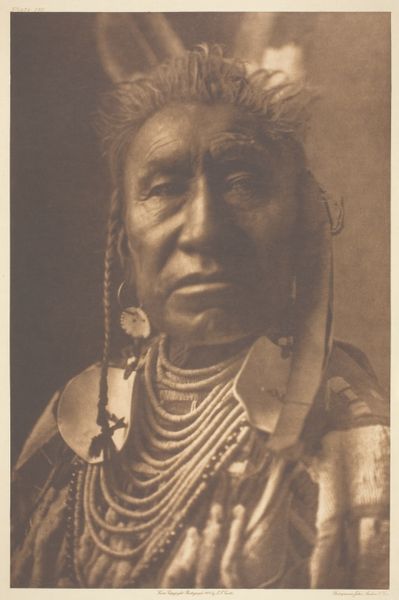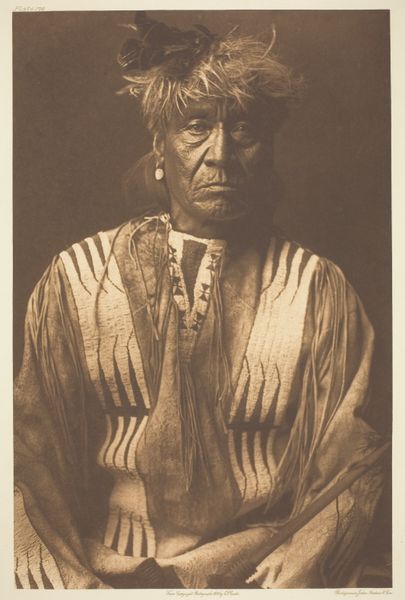
albumen-print, photography, albumen-print
#
albumen-print
#
portrait
#
photography
#
historical photography
#
albumen-print
#
poster
Dimensions: image/sheet: 8.9 × 5.7 cm (3 1/2 × 2 1/4 in.) mount: 10.2 × 6.1 cm (4 × 2 3/8 in.)
Copyright: National Gallery of Art: CC0 1.0
Joel E. Whitney made this photograph of U-Se-Do-Ha in Saint Paul, Minnesota, during the late 19th century. As photography became more accessible, it offered new ways of seeing and representing people, but it also raised questions about power and control. Here, the woman identified as U-Se-Do-Ha is presented as a 'Sioux Belle,' a label that exoticizes her. During this time, the US government was implementing policies of assimilation towards Native American tribes, including forced relocation, cultural suppression, and education in boarding schools. Images like this played a role in shaping public perceptions of Native Americans, often reinforcing stereotypes and justifying government actions. Whitney's gallery sought to capitalize on the popularity of these images as well as the common practice of "collecting" images that represented other cultures, and were sold as novelties. To understand this photograph, we need to consult historical documents, cultural studies, and postcolonial theory. These resources help us critically examine the photograph's historical context and its implications for understanding representation, identity, and power. The meaning of this art is contingent on the social and institutional context in which it was made and viewed.
Comments
No comments
Be the first to comment and join the conversation on the ultimate creative platform.
